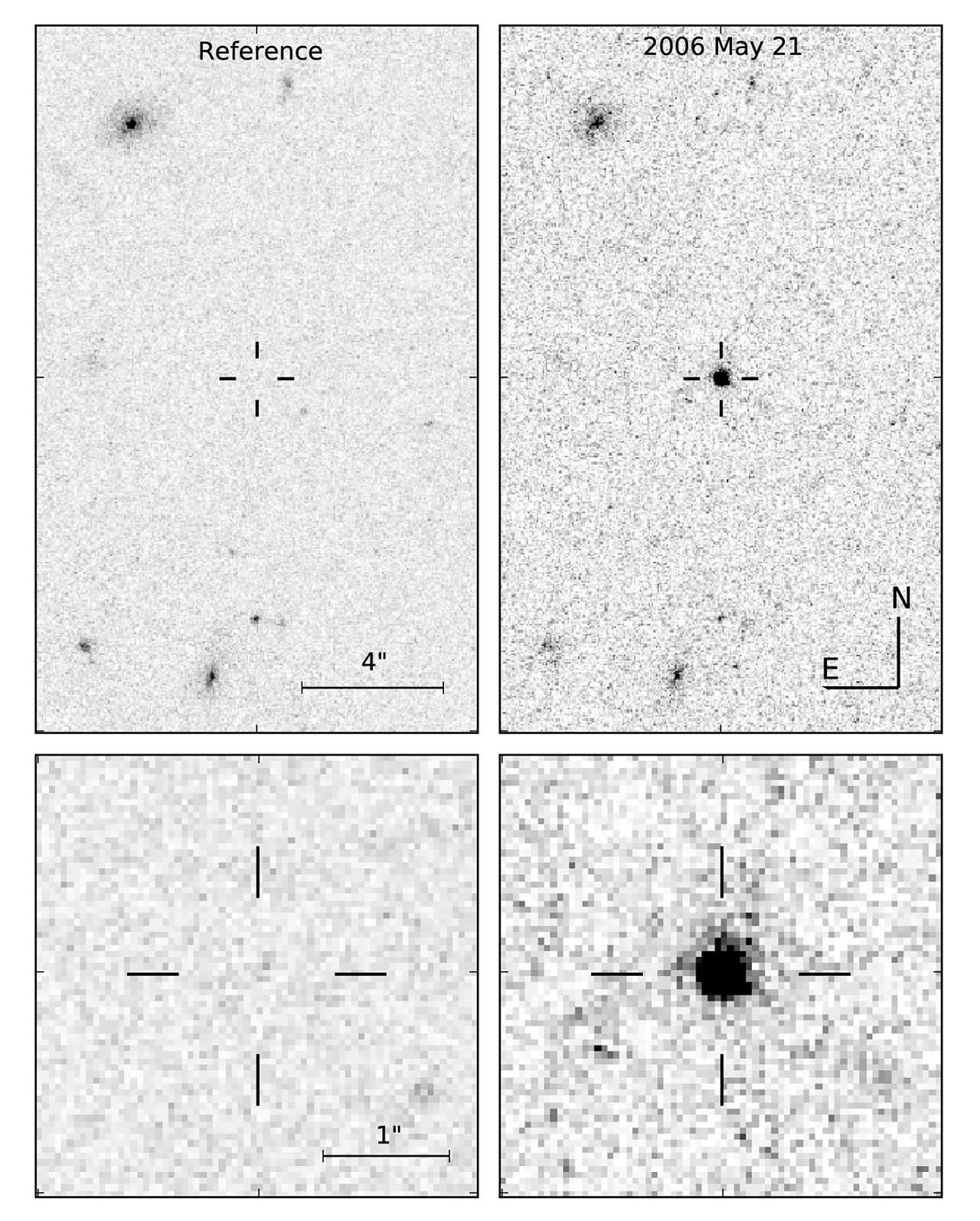[/caption]
A team of astronomers at the University of Warwick think they’ve finally explained what caused the bizarre transient object SCP 06F6. By comparing the optical spectrum of SCP 06F6 to that of carbon-rich stars in our own galaxy, the team concludes the sudden outburst was not a low-energy local event but a supernova-like explosion within a cool carbon-rich atmosphere some 2 billion light years away. If they’re right, it means the collapse of carbon-rich stars may lead to supernovae unlike any yet seen.
First observed in 2006 by U.S. researchers on images from the Hubble Space Telescope, SCP 06F6 flashed suddenly then faded from view over some 120 days. The U.S. team published their findings in September 2008. But they had no idea what might cause this outburst. The event was so unusual, if fact, that astronomers had didn’t know whether SCP 06F6 was located in our own galaxy or at the other end of the universe. Talk about experimental uncertainty!
The Warwick team noticed the optical spectrum of SCP 06F6 looked a lot like light from cool stars with molecular carbon in their atmosphere. But to get a close spectral match with SCP 06F6, the team had to apply a redshift to the spectra of the carbon stars to correspond to a rapidly receding object some 2 billion light years away. The large distance and the sudden appearance of SCP 06F6 suggest the object may be related to the sudden collapse of a carbon-rich star. If so, it’s a brand new type of supernova.
But questions remain. SCP 06F6 seems to be alone in space… it has no known visible host galaxy. And the 120-day time scale of the object’s rise and fall in brightness is four times longer than most Type-II supernovae (the kind caused by the core-collapse of a massive star).
What’s more, X-ray observations by the European satellite XMM-Newton show the object blasts out up to 100 times more X-rays energy than expected from a typical Type-II supernova.
The strong X-ray emission may suggest the star was ripped apart by a black hole rather than exploding on its own. But according to Boris Gansicke, the lead researcher of Warwick team, “The lack of any obvious host galaxy for SCP 06F6 would imply either a very low black hole mass (if black holes do exist at the centres of dwarf irregular galaxies) or that the black hole has somehow been ejected from its host galaxy. While neither is impossible, this does make the case for disruption by a black hole somewhat contrived.”
The findings were published in the June 1, 2009 issue of Astrophysical Journal Letters.
Source: University of Warwick
Also see the Universe Today article about the discovery of SCP 06F6


The light curve is somewhat similar to 2 previous ‘slow rise’ type supernovae, but the carbon content is whack. A preprint of the paper can be found here: http://arxiv.org/…62v1.pdf . The host galaxy may be underluminous or obscured. A most peculiar beast.
Oops, try here for preprint: http://arxiv.org/PS_cache/arxiv/pdf/0809/0809.2562v1.pdf 🙂
Btw, I see that it is Gänsicke.